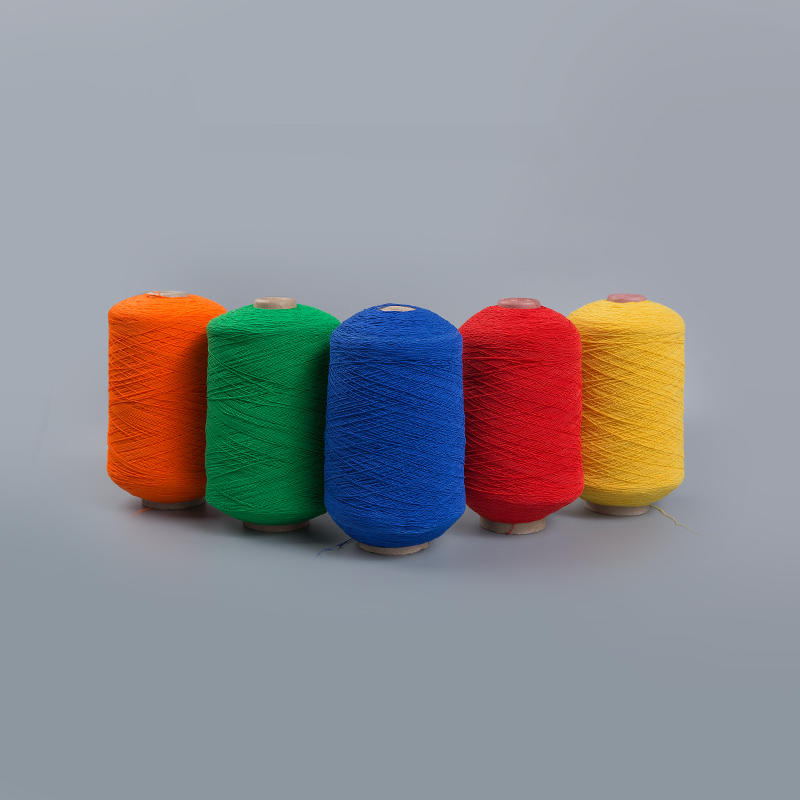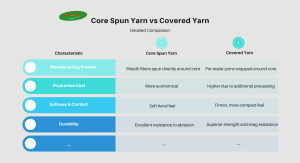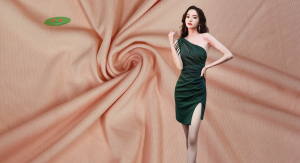In the world of textiles and materials, rubber covered yarn stands out for its unique properties and diverse applications. This innovative material combines the strength and flexibility of traditional yarn with the resilience of rubber, making it suitable for a variety of uses across multiple industries. As we delve into this fascinating topic, we will explore the characteristics, manufacturing processes, and potential applications of rubber covered yarn, as well as the machinery involved in its production.
Rubber covered yarn
Rubber covered yarn is essentially a textile strand that has been coated or wrapped with rubber. The combination creates a product that boasts both the desirable attributes of yarn—such as softness, stretchability, and ease of handling—and the robustness of rubber, including water resistance, durability, and flexibility. The result is a versatile material that finds its place in many applications, from fashion to industrial use.
The process of creating rubber covered yarn involves several steps, requiring skilled craftsmanship and specialized equipment. Understanding these processes not only provides insight into how this remarkable yarn is made but also offers a glimpse into its endless possibilities.
Characteristics of rubber covered yarn
When discussing rubber covered yarn, it is essential to highlight its key characteristics, which make it a preferred choice in various fields.
One of the defining features of rubber covered yarn is its elasticity. The rubber layer allows the yarn to stretch significantly without losing its shape, making it ideal for products that require a snug fit. This quality is especially beneficial in applications such as elastic bands, undergarments, and activewear, where movement and comfort are paramount.
Additionally, rubber covered yarn exhibits excellent resistance to wear and tear. The protective rubber coating shields the underlying yarn, extending its lifespan and maintaining its aesthetic appeal over time. This durability is crucial in industrial applications where materials often encounter harsh conditions, such as extreme temperatures, moisture, and friction.
Moreover, rubber covered yarn is resistant to chemicals and UV rays, enhancing its versatility. This characteristic makes it suitable for outdoor applications, ensuring that color fading and degradation do not compromise the quality of the material.
Applications of rubber covered yarn
The applications of rubber covered yarn are vast and varied, reflecting its adaptability and functional qualities.
In the fashion industry, rubber covered yarn is frequently used in swimwear and activewear, combining style with performance. Designers appreciate its ability to maintain form while providing optimal comfort and support. Moreover, the rubber coating can add an interesting texture to garments, allowing for creative design opportunities.
Beyond fashion, rubber covered yarn is instrumental in the automotive sector. It is commonly used in seat belts, airbags, and tire reinforcement. Here, the combination of durability and elasticity ensures safety and reliability, which are non-negotiable in automotive applications.
Additionally, the healthcare industry leverages rubber covered yarn in medical textiles. Bandages, compression garments, and prosthetic devices benefit from the combination of breathability and elasticity, ensuring patient comfort while promoting healing and recovery.
Manufacturing processes of rubber covered yarn
To fully appreciate the versatility of rubber covered yarn, it is important to understand the intricacies of its manufacturing process. This process typically involves several stages, each crucial to creating a high-quality final product.
The first stage is yarn preparation, where synthetic or natural fibers are spun into a yarn. This stage lays the foundation for the final material, as the type of yarn chosen will impact the overall characteristics of the rubber covered yarn.
Following this, the rubber covering is applied through a specialized machine known as a rubber yarn covering machine. This machine precisely wraps rubber around the yarn, ensuring a uniform application. The choice of rubber type, thickness, and winding technique all contribute to the final product’s performance and suitability for various applications.
Once the covering process is complete, the rubber covered yarn undergoes testing for quality assurance. Rigorous evaluations ensure that the yarn meets industry standards for durability, elasticity, and other critical factors.
Rubber yarn covering machine manufacturer

As we journey deeper into the world of rubber covered yarn, it’s important to recognize the role of the rubber yarn covering machine manufacturer. These manufacturers facilitate the production process, supplying vital equipment that enables textile producers to craft high-quality rubber covered yarn.
A well-designed rubber yarn covering machine plays a pivotal role in determining the final product’s quality. Therefore, understanding the features and capabilities of these machines can shed light on the efficiency and efficacy of the rubber-covered yarn production process.
Types of rubber yarn covering machines
In the realm of rubber yarn covering, there exists a variety of machine types tailored for specific requirements. Each machine boasts unique functionalities that cater to different production scales, yarn types, and rubber specifications.
Some machines focus on precision wrapping, utilizing advanced technological features such as computerized controls and sensor feedback systems. These machines allow manufacturers to produce rubber covered yarn with exceptional consistency and minimal waste, resulting in high-quality output.
Other machines may prioritize speed and volume, designed to meet the demands of large-scale production facilities. While these machines may not offer the same level of precision, they compensate with efficiency, enabling manufacturers to keep up with market demands.
Furthermore, some manufacturers offer customized solutions, allowing clients to modify existing machines or develop entirely new prototypes based on their specific needs. This flexibility is invaluable in an industry where innovation and adaptability are key to staying competitive.
Key features of a rubber yarn covering machine
When selecting a rubber yarn covering machine, several key features come into play.
First, the machine’s capacity to handle different types of yarn is essential. A versatile machine can accommodate various yarn materials, including cotton, polyester, and nylon, ensuring that manufacturers can diversify their product lines as needed.
Second, the machine’s rubber application system significantly impacts the quality of the final product. Machines equipped with adjustable rubber tension settings allow for better control over the thickness and tightness of the rubber wrap, leading to more consistent results.
Another important aspect is the machine’s automation capabilities. Advanced models incorporate robotics and automated feeding systems, streamlining the production process and reducing labor costs. Automation also minimizes human error, contributing to higher quality standards.
The importance of choosing the right manufacturer
Choosing the right rubber yarn covering machine manufacturer is crucial for ensuring optimal production outcomes. Manufacturers vary in reputation, technological advancement, and customer support, all of which can significantly influence the production process.
Reputable manufacturers invest in research and development, constantly innovating to create machines that improve efficiency and product quality. By partnering with such manufacturers, textile producers can gain access to cutting-edge technology and expertise, which can give them a competitive edge in the market.
Moreover, strong after-sales support is critical when investing in machinery. Manufacturers that offer training, maintenance services, and quick response times for repairs can assist clients in maximizing their investment and minimizing downtime.
Future trends in rubber yarn covering machinery
As technology continues to advance, the rubber yarn covering machinery landscape is evolving rapidly.
One notable trend is the integration of smart technology into manufacturing processes. Machines equipped with IoT (Internet of Things) capabilities can monitor production parameters in real-time, enabling manufacturers to optimize processes and identify anomalies before they escalate into significant issues.
Additionally, sustainability is becoming increasingly important within the textile industry. Manufacturers are exploring eco-friendly alternatives for rubber coverings and seeking ways to reduce energy consumption during the production process. Embracing sustainable practices not only aligns companies with consumer preferences but can also lead to cost savings in the long run.
Innovation in materials is also paving the way for exciting developments. New formulations of rubber that enhance performance characteristics while minimizing environmental impact could revolutionize the production of rubber covered yarn, offering even more applications and benefits.
Conclusion
Rubber covered yarn is a fascinating material that reflects the intersection of textile innovation and practical application. Its unique blend of characteristics opens doors to numerous possibilities across various industries, from fashion to automotive and healthcare. The machinery used to create this versatile yarn is equally important, as the quality and efficiency of production directly influence the final product’s performance.
As we continue to explore the myriad uses and manufacturing processes associated with rubber covered yarn, one thing remains clear: this innovative material is here to stay, adapting to meet the demands of modern consumers and industries alike. Whether you’re a designer, manufacturer, or simply someone interested in the evolution of textiles, the journey of rubber covered yarn is worth following closely.


